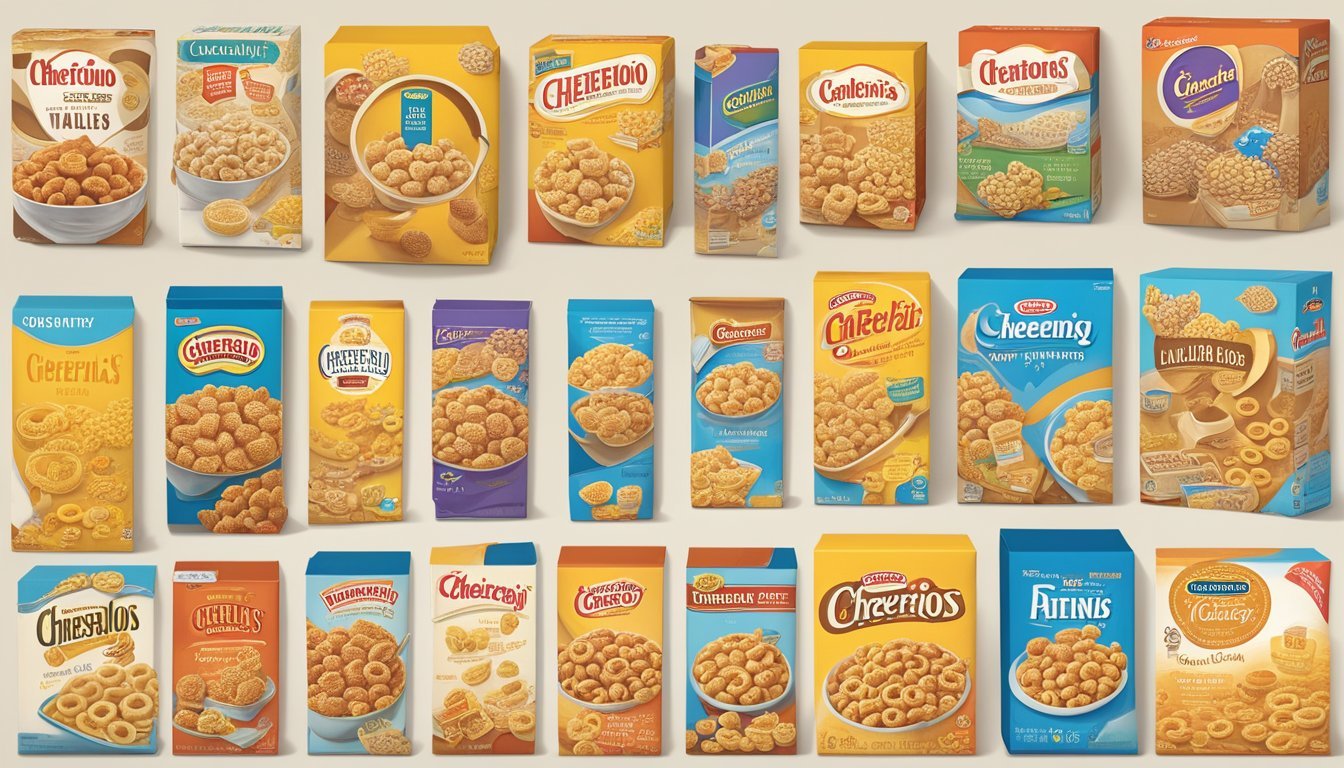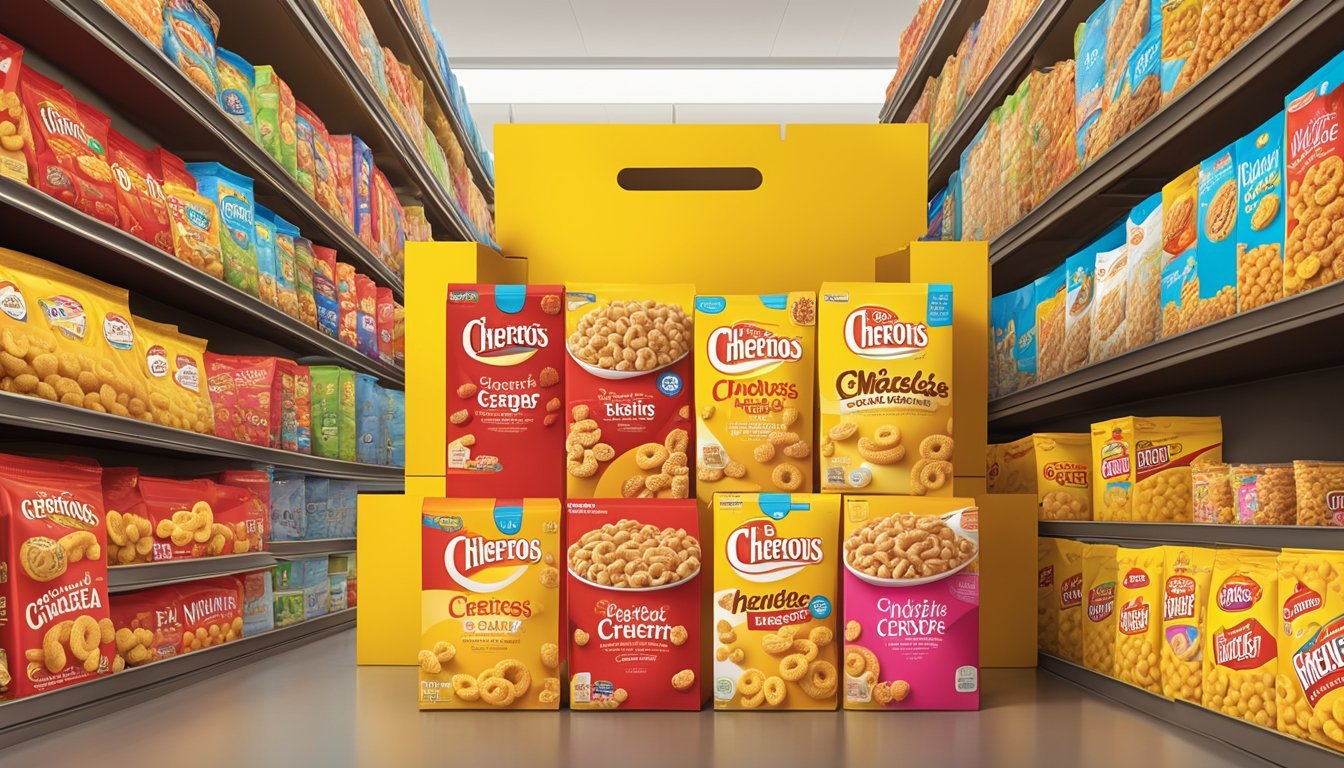Cheerios vs Waffle Crisp
Breakfast Cereal Showdown
This Article is Part of Our Breakfast Cereal Guide with Details on Cheerios Nutrition and Waffle Crisp Nutrition
When it comes to choosing breakfast cereals, the debate between Cheerios and Waffle Crisp is common. Both cereals offer distinct flavors and nutritional profiles that appeal to different preferences. Cheerios, with its classic O-shaped design and heart-healthy benefits, is a favorite for those seeking a nutritious start.
Waffle Crisp, on the other hand, delivers a unique taste reminiscent of syrup-covered waffles, attracting those with a sweet tooth. The battle isn't merely about flavor—nutritional content plays a significant role. Cheerios are low in calories and rich in essential vitamins and minerals, making them a staple for health-conscious individuals.
In contrast, Waffle Crisp offers higher sugar content and a more indulgent breakfast experience. This juxtaposition highlights the primary considerations for cereal lovers: balancing taste satisfaction with nutritional value.
Historical Overview and Brands
Cheerios and Waffle Crisp have their distinct origins and brand stories. This section will cover the initial release, production details, and unique characteristics that set these cereals apart.
Origin of Cheerios
Cheerios, produced by General Mills, first hit shelves in 1941 under the name "Cheerioats." Made primarily from oats, this cereal was designed to provide a healthy, whole-grain breakfast option. In 1945, the name was changed to Cheerios to better market the product and improve its brand recognition.
This cereal quickly became a staple in many households due to its simple ingredients and nutritional benefits. Cheerios are recognized for their small, ring-shaped pieces and come in various flavors, including Honey Nut, Apple Cinnamon, and Multigrain.
Introduction to Waffle Crisp
Waffle Crisp, produced by Post, was introduced in 1996. This novelty cereal featured tiny, waffle-shaped pieces with a distinctive maple syrup flavor. The cereal aimed to capture the taste of traditional breakfast waffles in a convenient, crunchy form.
Waffle Crisp was known for maintaining its texture and avoiding sogginess, a common issue with many other cereals. In 2018, Post discontinued Waffle Crisp, much to the disappointment of its fans. Despite its relatively short run, Waffle Crisp remains fondly remembered for its unique taste and playful design.
Nutritional Comparison
When comparing Cheerios and Waffle Crisp, it’s essential to examine their nutritional aspects closely. This includes their calories and sugar content, vitamins and minerals, and protein and fiber content.
Calories and Sugar Content
Cheerios is a popular choice for those keeping an eye on their calorie intake. Original Cheerios contains approximately 100 calories per cup, with just 1 gram of sugar.
Waffle Crisp, on the other hand, has 120 calories per cup but packs in 14 grams of sugar.
Cheerios: 100 calories, 1g sugar
Waffle Crisp: 120 calories, 14g sugar
This makes Cheerios a better option for those seeking a low-sugar, low-calorie breakfast.
Vitamins and Minerals
Cheerios is enriched with a variety of vitamins and minerals. It includes significant amounts of iron and calcium, providing around 45% of the daily value (DV) for iron and 10% DV for calcium per serving.
Waffle Crisp is less forthright about its micronutrient content. While it does contain some added vitamins and minerals, the specific amounts are generally lower compared to Cheerios.
Cheerios offers a more comprehensive profile of vitamins and minerals, making it a better choice if these nutrients are a priority.
Protein and Fiber Content
Protein and fiber are vital for maintaining satiety and digestive health. Cheerios provides 3 grams of protein and 3 grams of fiber per serving.
Conversely, Waffle Crisp contains 2 grams of protein and just 1 gram of fiber per serving.
Cheerios: 3g protein, 3g fiber
Waffle Crisp: 2g protein, 1g fiber
Cheerios is superior in this aspect, offering more protein and fiber, which can help keep you full longer and support digestive health.
Texture and Taste Experience
Cheerios and Waffle Crisp offer distinct experiences in texture and taste. Key differences include how they handle milk and their flavor profiles, influenced by their ingredients and design.
Crispness and Sogginess
Cheerios maintain a firm texture in milk due to their solid, round shape. They tend to resist sogginess longer than many other cereals. This makes them ideal for leisurely breakfasts where the cereal stays crunchy.
Waffle Crisp, designed to mimic the texture of waffles, starts with a pronounced crunch. However, its porous structure allows milk to penetrate quickly, leading to noticeable sogginess if left in milk for extended periods. This cereal's texture caters to those who enjoy a quick burst of crispiness followed by a softer bite.
Sweetness and Flavor Profiles
Cheerios are subtly flavored, often with hints of oats and mild sweeteners. Varieties like Honey Nut Cheerios add a touch of honey, offering a gentle sweetness without overpowering the natural grain taste. This makes them versatile, appealing to a wide range of palates.
Waffle Crisp, on the other hand, delivers a bolder sweetness with a clear maple syrup flavor. Artificial flavors and sugars intensify this taste, creating a dessert-like cereal experience. The strong syrup and honey notes dominate, appealing to those who favor sweeter breakfast options. The trade-off is a higher sugar content, contributing to its richer flavor.
Marketing and Packaging
Cheerios and Waffle Crisp utilize distinctive marketing strategies and packaging approaches, leveraging their unique brand identities to appeal to different consumer segments. Both cereals aim to communicate their value and establish strong market positions through effective branding and packaging innovations.
Brand Messaging
Cheerios is often marketed as a healthy, family-friendly option, emphasizing its whole grain oats and heart health benefits. The brand runs commercials highlighting its nutritional value, targeting health-conscious parents. Cheerios' advertising often features diverse family settings, reinforcing its role as a breakfast staple for all ages.
Waffle Crisp, on the other hand, focuses on taste and nostalgia. Their commercials often feature playful, engaging content that appeals to children and adults who enjoy a sweet, indulgent breakfast. The brand messaging emphasizes the unique waffle flavor, aiming to create a fun and memorable brand identity.
Consumer Perception
Consumers generally perceive Cheerios as a nutritious, reliable cereal option. It's a top-ranked choice at stores like Walmart because of its health benefits and consistent quality. Packaging innovations, like the 2-box system, also enhance consumer satisfaction by improving pantry storage and reducing environmental impact.
Waffle Crisp is perceived as a fun and tasty snack. Its packaging is designed to stand out on shelves with bright colors and engaging visuals, appealing to those looking for a delicious treat. Though it may not rank as high in terms of health benefits, its distinct flavor and playful branding give it a strong presence in the market.
Dietary Considerations
When comparing Cheerios and Waffle Crisp, it is essential to consider nutritional aspects, particularly for individuals with specific dietary needs or restrictions. Key considerations include gluten content and sugar levels, vital for those managing conditions like celiac disease or diabetes.
Gluten-Free Options
Cheerios: Cheerios offers a gluten-free option, making it suitable for individuals with celiac disease or those on a gluten-free diet. The primary ingredient is oats, which are naturally gluten-free, but the production process ensures there is no cross-contamination. This makes Cheerios a safe and accessible choice for those with gluten intolerance.
Waffle Crisp: The ingredients in Waffle Crisp, including wheat flour, mean it contains gluten. Therefore, it is not suitable for those requiring a gluten-free diet. Those with gluten sensitivities or celiac should avoid Waffle Crisp to prevent adverse health effects.
Managing Sugar Intake
Cheerios: Cheerios typically have a lower sugar content compared to many other cereals. For instance, original Cheerios have about 1 gram of sugar per serving. This makes it a preferable option for individuals who need to monitor their sugar intake, such as those with diabetes. Low sugar content helps prevent spikes in blood sugar levels.
Waffle Crisp: Waffle Crisp has a significantly higher sugar content. A single serving contains around 13 grams of sugar, derived from added sugars like high-fructose corn syrup. This makes it less suitable for those managing their sugar intake or concerned about calories. Individuals who are watching their diet, particularly diabetics, should be cautious when consuming Waffle Crisp.




